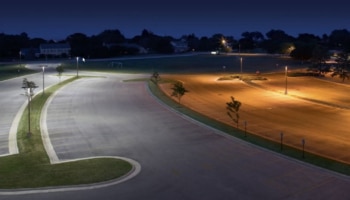Crime Prevention Through Environmental Design
By Kevin Whaley, CPP, Sr. Security Consultant at Kenton Brothers
Welcome to the first part of a multi-part series where we dive into the idea of Crime Prevention Through Environmental Design or CPTED.
How many parts? Yet to be determined. My objective with this series is to provide you with an introduction to CPTED with the hope that you will be able to consider these ideas and principles for your next security project.
Introduction
When it comes to physical security, most people tend to think of guards, video surveillance (aka “big brother”), alarms, fences with barbwire, etc.
That is the basic underlying impression that people get when they hear security. When I think of security, I think of onions. (That’s not an acronym for anything.) When I conduct a security assessment, I tell my clients to think of security like an onion. Why? Because security, like onions, should have layers. We also refer to these layers as “concentric layers of security” meaning that each layer builds off of the last to create maximum protection.
When developing a security plan, the goal is to create a “target shift” or target hardening. This means that you’re trying to make it as difficult as possible to defeat the security measures or increase the probability of becoming detected or being caught. Depending on conventional security measures like access control, video surveillance and security guards may have their limitations. Employing standalone security measures may fail to address the underlying behavioral patterns that may adversely affect the environment. That’s where CPTED comes in.
Crime Prevention Through Environmental Design
 CPTED is defined as “the proper design and effective use of the built environment that can lead to a reduction in the fear and incidence of crime and an improvement in the quality of life.” In other words, a CPTED analysis focuses on creating changes to the physical and social environment, that may reinforce positive behavior, with the goal of reducing opportunities for crime that may be inherent in the design of the built environment. CPTED is a multi-disciplinary approach to deterring criminal behavior.
CPTED is defined as “the proper design and effective use of the built environment that can lead to a reduction in the fear and incidence of crime and an improvement in the quality of life.” In other words, a CPTED analysis focuses on creating changes to the physical and social environment, that may reinforce positive behavior, with the goal of reducing opportunities for crime that may be inherent in the design of the built environment. CPTED is a multi-disciplinary approach to deterring criminal behavior.
CPTED incorporates principles from:
- Planning
- Architecture
- Landscape Architecture
- Security
- Facilities
- Engineering
- Law Enforcement
- Legal/HR
CPTED design includes the physical design, social management and directives that seek to affect positive human behavior as people interact with their environment.
Depending on your organization’s industry, you may already have established design guidelines that have been set by a governing body, standard, or regulation. For example, FEMAs Risk Management Series: Site and Urban Design for Security (Guidance Against Potential Terrorist Attacks) FEMA 430, establishes guidance for government facilities but can be applied almost universally.
However, if your organization doesn’t have guidelines, there are many factors that you may need to consider during the planning phase.
These factors may include (but are not limited to):
- Stairs and ramp design
- Interior and exterior lighting
- Parking lot designs
- Landscaping
- Doors and windows
- Blind spots or “ambush” points
- Building circulation patterns
When entering the planning and design phase, it may be beneficial for you to enlist the services of a security consultant with experience in conducting CPTED assessments to assist you in developing your plans. (That would be Kenton Brothers Systems for Security… :)
CPTED is based on 4 key overlapping concepts which we will dive into in greater detail in the rest of this series.
 Natural Surveillance – the placement of physical features, activities, and people in a way that maximized visibility from the surrounding environment. This increases the threat of apprehension by taking steps to increase the perception that people can be seen.
Natural Surveillance – the placement of physical features, activities, and people in a way that maximized visibility from the surrounding environment. This increases the threat of apprehension by taking steps to increase the perception that people can be seen.
Natural Access Control – Natural access control means controlling access to a site. People are physically guided through a space by the strategic design of streets, sidewalks, building entrances, and landscaping. This clearly defines entryways and guides personnel to specific entrances that are well lit and overlooked by surrounding areas.
Territorial Reinforcement – In CPTED it refers to the development of areas or places where the users feel a strong sense of ownership. It is an umbrella concept, embodying natural surveillance and access control principles. This establishes your territorial boundaries and provides the “line in the sand.”
Maintenance – Allows for the continued use of a space for its intended purpose. Serves as an additional expression of ownership. Prevents reduction of visibility from landscaping overgrowth and obstructed or inoperative lighting. Ensures that your security postures remain effective by reinforcing the concepts of natural surveillance, access control and territorial reinforcement. Displays that the site is regularly cared for and occupied.
CPTED can be a little overwhelming, even for seasoned practitioners. If you’re interested in finding out how CPTED can enhance your organization’s security program, or just want to learn more, please contact me. (Kenton Brothers’ local CPTED subject matter expert, Kevin Whaley, CPP.)




Leave a Reply
Want to join the discussion?Feel free to contribute!